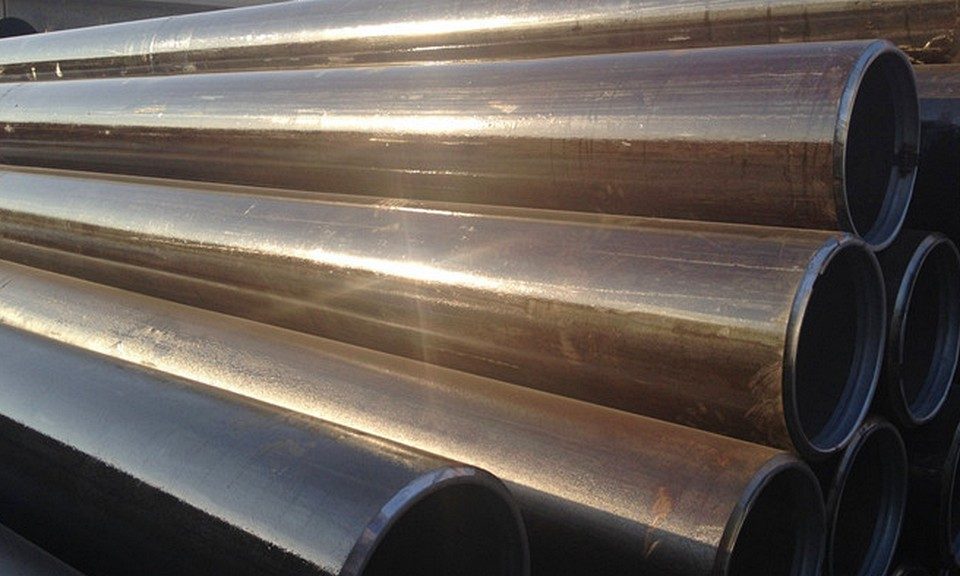
ASTM B619 UNS N06022 Hastelloy C22 Pipe
August 31, 2024
Oil Casing Pipe Market Size, Growth Potential 2024-2031
September 7, 2024Global Pipeline Construction Outlook 2024: New LNG Terminals Call for More Pipelines
Introduction
The global energy landscape is undergoing a significant transformation, driven by the increasing demand for cleaner and more sustainable energy sources. Liquefied Natural Gas (LNG) has emerged as a key player in this transition, offering a cleaner alternative to traditional fossil fuels. As new LNG terminals are being developed worldwide, the need for expanded pipeline infrastructure has become more critical than ever. This article provides an in-depth analysis of the global pipeline construction outlook for 2024, focusing on the impact of new LNG terminals and the challenges and opportunities they present.
The Rise of LNG: A Global Perspective
The Growing Demand for LNG
The demand for LNG has been steadily increasing over the past decade, driven by several factors:
- Environmental Concerns: LNG is considered a cleaner alternative to coal and oil, producing fewer greenhouse gas emissions.
- Energy Security: Countries are seeking to diversify their energy sources to enhance energy security and reduce dependence on a single supplier.
- Economic Growth: Emerging economies are experiencing rapid industrialization and urbanization, leading to increased energy consumption.
Key Players in the LNG Market
Several countries are leading the charge in LNG production and export:
- Qatar: As one of the world’s largest LNG producers, Qatar continues to expand its production capacity to meet global demand.
- Australia: With significant investments in LNG infrastructure, Australia is poised to become a major LNG exporter.
- United States: The U.S. has seen a surge in LNG exports, driven by the shale gas revolution and increased production capacity.
The Role of LNG Terminals
What Are LNG Terminals?
LNG terminals are facilities designed to handle the import and export of liquefied natural gas. They play a crucial role in the LNG supply chain, facilitating the storage, regasification, and distribution of LNG to end-users.
Types of LNG Terminals
- Export Terminals: These facilities liquefy natural gas for export to international markets.
- Import Terminals: These terminals receive LNG shipments, store the gas, and regasify it for distribution to domestic markets.
The Need for Expanded Pipeline Infrastructure
Connecting LNG Terminals to Markets
The development of new LNG terminals necessitates the expansion of pipeline infrastructure to connect these facilities to end-users. Pipelines are essential for transporting natural gas from production sites to LNG terminals and from import terminals to consumers.
Challenges in Pipeline Construction
- Regulatory Hurdles: Obtaining permits and approvals for pipeline construction can be a lengthy and complex process.
- Environmental Concerns: Pipeline projects often face opposition from environmental groups concerned about the impact on ecosystems and wildlife.
- Technical Challenges: Constructing pipelines in challenging terrains, such as mountainous regions or deepwater environments, requires advanced engineering solutions.
Regional Pipeline Construction Outlook
North America
- United States: The U.S. is expected to see continued growth in pipeline construction, driven by increased LNG exports and domestic demand. Key projects include expanding existing pipelines and developing new routes to connect shale gas fields to LNG terminals.
- Canada: With its abundant natural gas reserves, Canada is focusing on expanding its pipeline network to support LNG export projects on the west coast.
Europe
- Diversification of Supply: European countries are investing in pipeline infrastructure to diversify their energy sources and reduce reliance on Russian gas. This includes developing new pipelines to connect LNG import terminals to domestic markets.
- Interconnectivity: Efforts are underway to enhance interconnectivity between European countries, allowing for more efficient gas distribution and increased energy security.
Asia-Pacific
- China: As one of the largest LNG importers, China is expanding its pipeline network to support growing demand and connect new LNG terminals to industrial and residential consumers.
- India: India is investing in pipeline infrastructure to support its ambitious LNG import plans and meet the rising energy needs of its rapidly growing economy.
Middle East and Africa
- Qatar: As a major LNG exporter, Qatar is focusing on expanding its pipeline network to support increased production and export capacity.
- Nigeria: With its vast natural gas reserves, Nigeria is investing in pipeline infrastructure to support LNG export projects and domestic gas distribution.
Opportunities and Innovations in Pipeline Construction
Technological Advancements
- Smart Pipelines: The integration of digital technologies, such as sensors and data analytics, is enhancing pipeline monitoring and maintenance, improving safety and efficiency.
- Advanced Materials: The use of advanced materials, such as corrosion-resistant alloys and composite materials, is extending the lifespan of pipelines and reducing maintenance costs.
Collaboration and Partnerships
-
- Public-Private Partnerships: Collaboration between governments and private companies is facilitating the development of pipeline infrastructure, leveraging resources and expertise.
- International Cooperation: Cross-border pipeline projects are benefiting from international cooperation, enabling the efficient transport of LNG across regions.
Conclusion
The global pipeline construction outlook for 2024 is shaped by the growing demand for LNG and the development of new LNG terminals worldwide. As countries seek to enhance energy security and transition to cleaner energy sources, the expansion of pipeline infrastructure is essential. While challenges remain, technological advancements and collaborative efforts are paving the way for a more connected and resilient energy landscape. As the world continues to embrace LNG as a key component of the energy mix, the role of pipelines in facilitating its distribution will be more critical than ever.
FAQ
1. Why is LNG considered a cleaner energy source?
LNG produces fewer greenhouse gas emissions compared to coal and oil, making it a cleaner alternative for power generation and industrial use.
2. What are the main challenges in pipeline construction?
Challenges include regulatory hurdles, environmental concerns, and technical difficulties in constructing pipelines in challenging terrains.
3. How are technological advancements improving pipeline construction?
Technological advancements, such as smart pipelines and advanced materials, are enhancing pipeline monitoring, maintenance, and longevity.
4. What role do public-private partnerships play in pipeline development?
Public-private partnerships facilitate the development of pipeline infrastructure by leveraging resources and expertise from both sectors.
5. How is the global demand for LNG impacting pipeline construction?
The growing demand for LNG is driving the expansion of pipeline infrastructure to connect new LNG terminals to markets and ensure efficient distribution.












